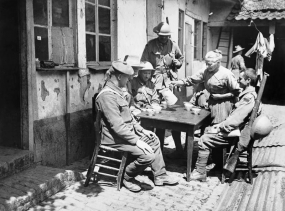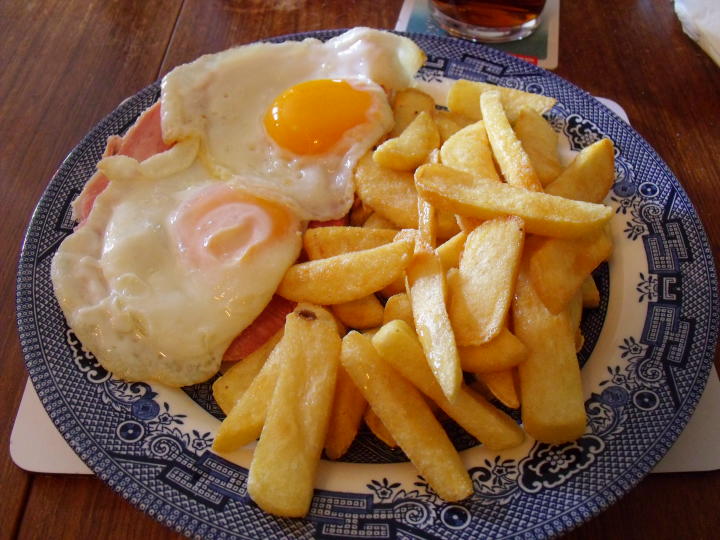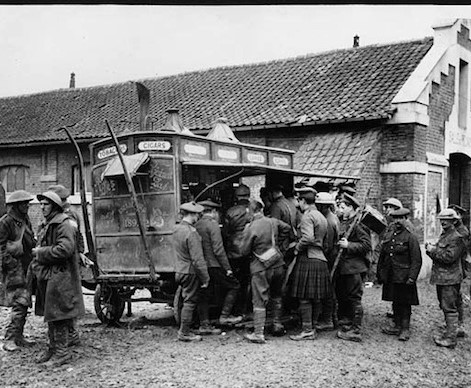Life in the Trenches: The Food
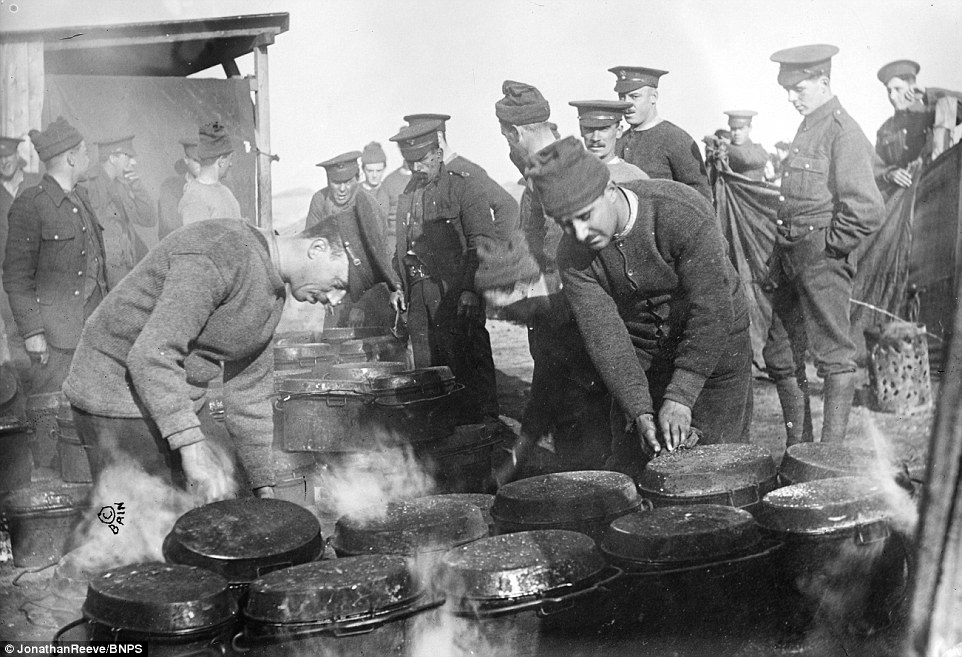
The task of providing plenty of good nutritious food for a million men each day was beyond the abilities of any army in 1915. Most of the food was dried or in cans and it was sent over from Britain. This allowed French farmers to focus on feeding their own country's army. Meals were cooked in giant kettles behind the lines and selected soldiers would carry it up to the front lines in large metal containers. The same containers were used each day so the tea tasted of stew and vice versa. By the time the food carriers made their way through the winding communication trenches the food was often cold. When local food was available, soldiers would often try to cook on their own - using portable stoves - or over fires.
Breakfasts consisted of days old stale, crumbly bread, hard dry biscuits, oatmeal, canned jam/marmalade, and something resembling coffee or tea. Dinner might include canned corned beef, known as "bully beef", or "Maconochie's", a canned watery stew, or pea soup with meat. When they were in the reserve billets soldiers would try to buy or scrounge potatoes, carrots, onions, or beans. Soldiers also received food parcels from home containing cakes, chocolate and other goodies.
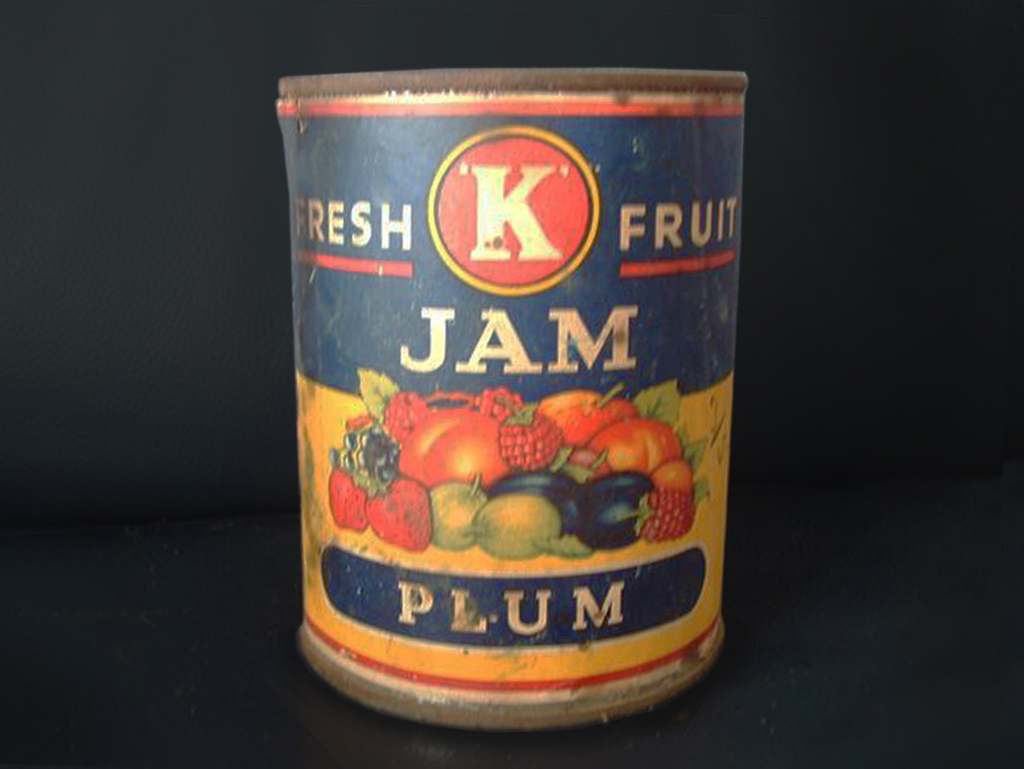
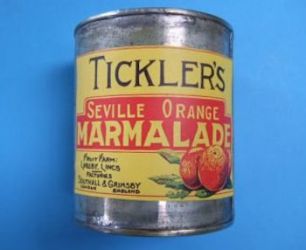
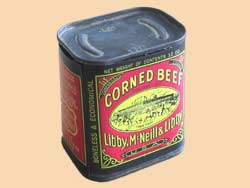
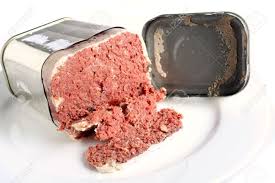
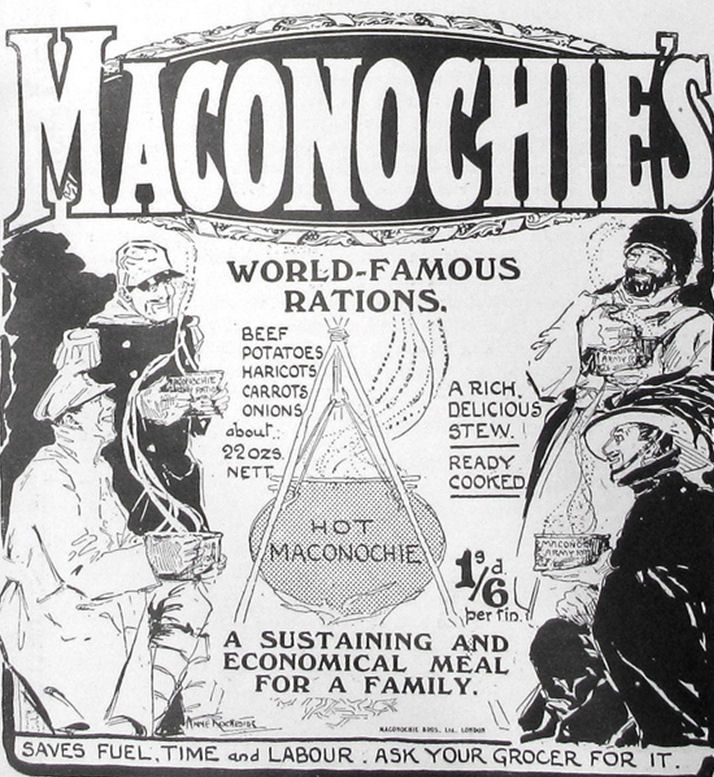
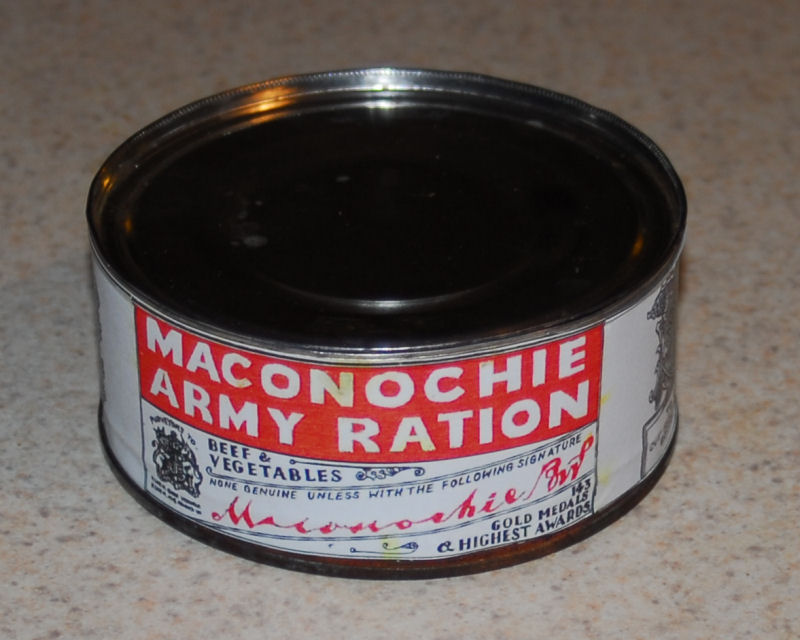
Every soldiers' kit included "Iron Rations". These consisted of canned beef, hard biscuits, dry cheese, and tea. They were to be used for battlefield emergencies only, and only when an officer gave consent.
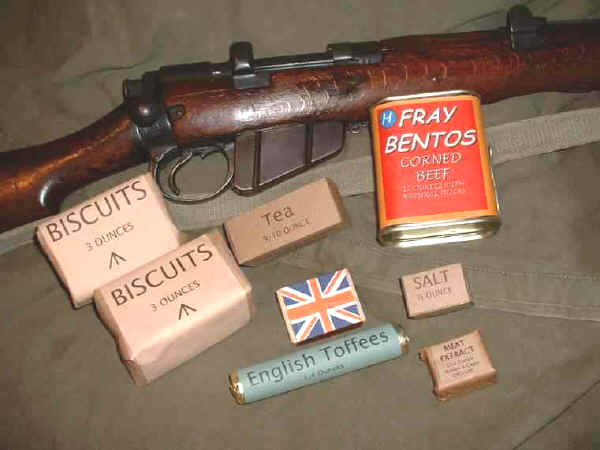
When soldiers were pulled back to the rest areas they would use their money to buy tobacco, cigarettes and fresh food. They could even find "snack bars" - either small cafes called "estaminets" set up in the front of local, or YMCA relief wagons. Fried eggs, french fries and cheap wine was the most common snack. Staff Officers, of course, ate much better, and even visited fine restaurants on occassion.
